
In Vicki Abeles’ filme, Race to Nowhere, we met U. S. kids who were so overscheduled they had no time to be kids. The film suggested we were preoccupied with testing and performance, undermining what our kids should be doing in the classroom, let alone in their down time. So what is happening down under?
I’ve been to Australia six times for business and personal reasons (my ancestors, who were academics, once owned Geelong College in Victoria). The only thing that’s consistent about each trip? When I have to go home, I cry and then console myself with the promise, I shall return!
Professor Barry McGaw returned in 2005, leaving his position as Director for Education at OECD, responsible for the PISA test — the test U. S. Education Secretary Arne Duncan downloads when someone mentions The Global Achievement Gap. Did you know Arne Duncan played professional basketball for Australia’s National Basketball League and in the process met his wife Karen, an Australian high school teacher?
Australia is on the Move! Professor Barry McGaw, Presidente do Currículo Australiano, Autoridade de Avaliação e Relatórios (EVENTO), has a brand new national curriculum to explain to me, entre outras coisas.
Barry, when I mention your work, educators bring up student assessment. Porquê?
What I am going to say is in the context of Australia and in an effort to produce a national curriculum. Nós estamos, like the United States, a federation, but one in which the responsibility for education is at the state and not the local level. There are six states and two territories with separate curricula, so the task of developing a national approach is much simpler than it would be in the United States. There have been several attempts since the late 1980s to move to a national curriculum but this time we have made significant progress. Em Dezembro 2010, the Council of Education Ministers endorsed an Australian Curriculum for Kindergarten through Year 10 in English, Matemática, Ciência, and History.
The national curriculum includes knowledge, understanding and skills, and sets our students’ learning entitlements. The ‘content descriptions’ set down the entitlements but we have provided ‘content elaborations’ as well for those teachers who would welcome additional guidance about how the content might be dealt with. The elaborations also serve to meet the expectations of those states and territories that traditionally specify their curricula in more detail than others.
When it comes to specifying achievement standards by grade level for learning areas, it is difficult to do it unambiguously. We do it but illustrate them with annotated samples of real students’ work collected in response to real tasks set by teachers. The assessments and annotations are provided by panels of teachers and the samples chosen illustrate various levels of achievement. The states and territories have been using this approach for a number of years, as are people in other countries as well. We think that this is the best way to help teachers use specifications of achievement standards consistently.
What kind of education system provides the human skills to compete globally in the 21st century?
In the Australian curriculum, we are taking a different approach to incorporation of what some call 21st century skills. Primeiro, we have not abandoned the traditional disciplines. We recognize that there are thousands of years of intellectual development behind the current ways of thinking about and representing knowledge. The disciplines that have been created are rich in their capacity to help people understand the world. So we have a curriculum that is discipline based but that is one of only three dimensions.
We include the so-called 21st Century skills as a second dimension. We do not call them that, contudo, since most of the skills typically nominated are ones that were clearly relevant in earlier centuries. We call them ‘general capabilities’. We started with eight but now use seven: alfabetização, numeracia, ICT competence, pensamento crítico e criativo, ethical behavior, personal and social competence, and intercultural understanding.
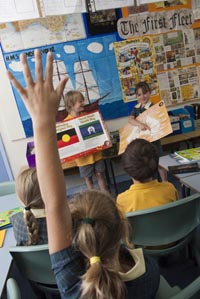
On a third dimension we have identified three current priorities that we believe need special attention. They are Aboriginal and Torres Strait Islander histories and cultures, Asia and Australia’s links with Asia, and Sustainability. These are in addition to and not instead of things already secure in the curriculum such as Australia’s historical connections with the United Kingdom and their expression in Australia’s political and legal systems.
When our curriculum writers are developing the discipline based curricula, they are obliged to pay attention to where the general capabilities and the current cross-curriculum priorities could be addressed. The curriculum is presented electronically (ver www.australiancurriculum.edu.au) and that enables users to view the curriculum content from the perspective of any one of the three dimensions: disciplines, general capabilities and cross-curriculum priorities. The electronic display lets us have it all ways. We can embrace general capabilities that are particularly important in the 21st Century without abandoning well established discipline based ways of knowing. We can also provide protection to current issues, such as those captured in our cross-curriculum priorities, that we believe should be an important part of the world view offered to young Australians.
Technology knowledge in today’s world could almost be a special extension to curriculum. Would you agree?
Sim, but not as a separate subject in the early years. It has to be developed alongside everything else as reflected in our general capability, ICT competence. By the time you get to Grades 8 a 10, schools will offer a range of technology studies.
Can schools teach ethics?
Schools are institutions in which values and ethics have to be addressed. It’s tricky territory because it’s easy for people to mischaracterize teachers as pursuing particular political agendas if they do address them. Our ‘general capabilities’ include ‘ethical behavior’, ‘personal and social competence’, and ‘inter cultural understanding’ quite deliberately to address the issue you raise.
More students applying to higher education. More pressure?
We have the same problem. We have parents as well as students feeling this pressure. We have had a huge shift of students from government to private schools. Our research shows that the performance of those private schools is not necessarily better than public schools but parents feel the pressure to buy what they feel might give their children an advantage.
We see the pressure building earlier too. We have national assessments of students in Grades 3, 5 , 7 e 9 in the basic skills in literacy and numeracy. Parents receive reports on their own children but we now publish school results on the My School website (www.myschool.edu.au). Nesse site, we provide direct comparisons amongst schools with students from similar socio-educational backgrounds. That avoids unfair comparisons with schools in much more advantaged circumstances but it does put pressure on schools and students.
Enough emphasis on the arts in curriculum?
There is always a risk when some things, such as literacy and numeracy, are given such special prominence that other things might be downgraded. There is a case for special attention to literacy and numeracy because they are basis to so much other learning, but we need to protect other areas from too much focus on them. The protection for the others lies in clear, publicly available information on the curriculum to be implemented in all schools. Além disso, we require teachers to report to parents students’ achievements in all areas of the curriculum.
Sabedoria Mundo — The Goals of Australia’s New Curriculum
Support students to become successful learners, confident and creative individuals, active and informed citizens by promoting equity and excellence in education. Equip students with the essential skills, knowledge and capabilities to thrive and compete in a globalised world and information rich workplaces of the current century. Curriculum will be accessible to all regardless of their social or economic background or the school they attend.
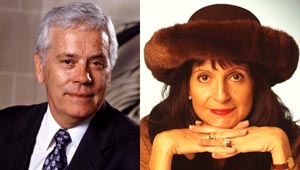

Em A Pesquisa Global para a Educação, juntar C.M. Rubin e líderes de renome mundial, incluindo Sir Michael Barber (Reino Unido), Dr. Leon Botstein (US), Dr. Linda, Darling-Hammond (US), Dr. Madhav Chavan (Índia), Professor Michael Fullan (Canadá), Professor Howard Gardner (US), Professor Yvonne Hellman (Holanda), Professor Kristin Helstad (Noruega), Professor Rose Hipkins (Nova Zelândia), Professor Cornelia Hoogland (Canadá), Senhora. Chantal Kaufmann (Bélgica), Professor Dominique Lafontaine (Bélgica), Professor Hugh Lauder (Reino Unido), Professor Ben Levin (Canadá), Professor Barry McGaw (Austrália), Sridhar Rajagopalan (Índia), Sir Ken Robinson (Reino Unido), Professor Pasi Sahlberg (Finlândia), Andreas Schleicher (PISA, OCDE), Dr. David Shaffer (US), Chanceler Stephen Spahn (US), Yves Theze (Francês Lycee EUA), Professor Charles Ungerleider (Canadá), Professor Tony Wagner (US), Professor Dylan Wiliam (Reino Unido), Professor Theo Wubbels (Holanda), Professor Michael Young (Reino Unido), e Professor Minxuan Zhang (China) como eles exploram as grandes questões da educação imagem que todas as nações enfrentam hoje. A Pesquisa Global para Educação Comunitária Página
C. M. Rubin é o autor de duas séries on-line lido pelo qual ela recebeu uma 2011 Upton Sinclair prêmio, “A Pesquisa Global para a Educação” e “Como vamos Leia?” Ela também é autora de três livros mais vendidos, Incluindo The Real Alice no País das Maravilhas.

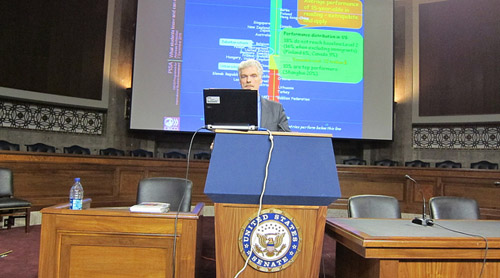
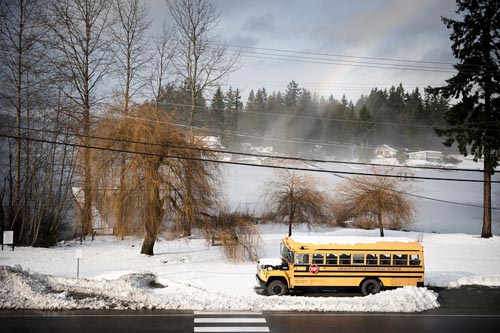
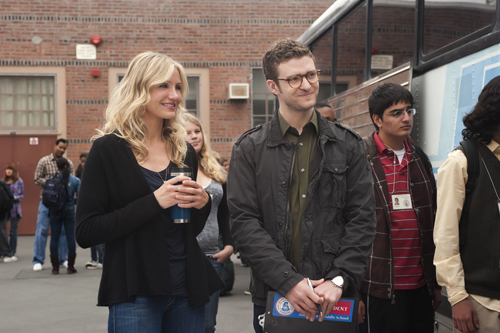
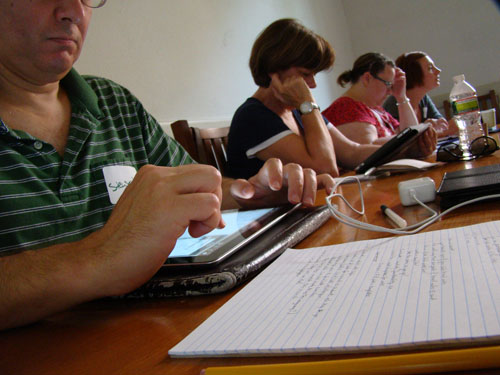
Comentários Recentes